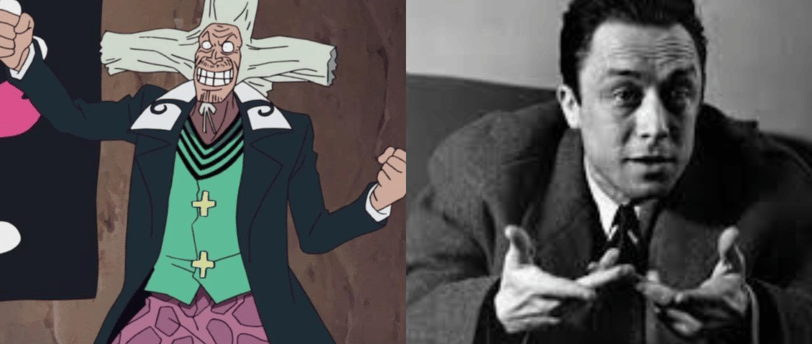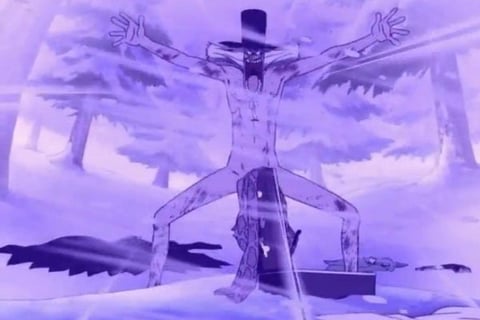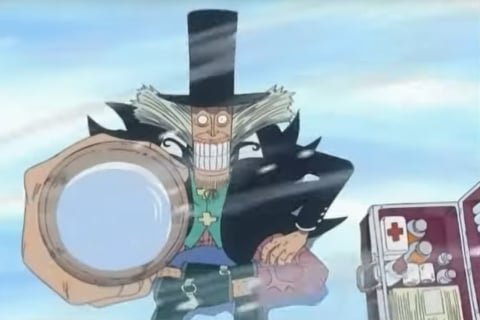Philosophy Through Anime: Existentialism and Absurdism
Dr. Hiriluk (One Piece) VS Dr. Rieux (The Plague-Camus)
7/29/20246 min read


Welcome, everyone, to the first article in the “Philosophy Through Anime” series, which I have wanted to start for a long time. My partner and I recently began watching “One Piece,” and around episode 85, at Drum Island, the side character Dr. Hiriluk shook me hard enough to take this step.
Spoiler alert: This article discusses a side character from “One Piece.” If you haven’t reached episode 85, this content may contain spoilers. Same for Camus’ novel “The Plague”.
For context, Luffy and his team, on their way to Alabasta, reach a snowy island called Drum Island. In their desperate search for a doctor for the feverish Nami, this adventure leads the crew to meet Chopper, who subsequently joins the Straw Hat Pirates as the ship’s doctor.


Chopper’s Background:
Looking at Chopper’s background, he is a reindeer that ate the Human-Human devil fruit, which anthropomorphized him. Now he can talk and think like a human, he’s self-conscious, but his body remains like a reindeer’s. We could philosophize just on Chopper and his transformation to a human being, but let’s skip that for now.
Drum Island


Chopper
Dr. Hiriluk’s Philosophy
Chopper was not accepted by reindeers nor humans due to his hybrid nature. The first person ever to accept him was Dr. Hiriluk, who tried to help a bleeding Chopper in the woods.


Dr. Hiriluk showing Chopper he’s not hiding weapons
Dr. Hiriluk is an eccentric, compassionate, and somewhat incompetent doctor who tried to help everyone on the island with his ineffective and experimental medical treatments. Dr. Hiriluk was convinced that the whole island was sick, with everyone suffering from a “heart-sickness.” By heart-sickness, he meant the inclination of people to be afraid of the new, to be closed-minded, and to act maliciously towards others. By acknowledging this sickness, Dr. Hiriluk insisted with Chopper not hold grudges against them, especially after they chased them away.
Comparison with Dr. Rieux:
The passion and drive in his mission reminded me of Dr. Rieux, the protagonist of Camus’ novel “The Plague.” Dr. Rieux is the doctor and main protagonist of the fight against the plague, an illness that suddenly strikes the city of Oran in the novel. He collects a team, a plague-task force, which works with a spirit of mutual aid to alleviate the absurdity of the plague. For Camus, the plague is an allegory of life itself. No matter how much you fight it, if someone needs to die, then they will die. The fight against the plague is similar to the inherently meaningless fight against the absurdity of life, which has a start and an end, and we can’t do anything about it.
Camus’ view of life was all but nihilistic, he did not surrender in front of the meaninglessness of existence. Instead, he promoted the idea of fighting absurdity as a common enemy, a common struggle among the whole of humanity. As Umberto Eco mentioned in his essay “Inventing the Enemy,” societies tend to identify and oppose a common enemy to unite people against a common cause and distract them from internal conflicts by focusing on external threats. While Eco uses this essay to criticize government-created xenophobia and nationalism as forms of manipulation, Camus’ existential absurdism fosters the feeling of togetherness against the absurd itself. Helping each other infuse our lives with meaning helps alleviate the void brought by a war bound to be lost — the war against life.
In “The Plague,” this central point emerges during a conversation between Tarrou and Dr. Rieux right before they swim in the sea. Tarrou mentioned that he was affected by the plague his whole life, and the whole world is affected by the plague. During this touching dialogue, it is clear that he refers to the plague as a sickness common to all humans, the sickness of the human condition. This same sickness, this human condition, is what Dr. Hiriluk was fighting in Drum Island.
Existential Struggle:
Dr. Rieux and Dr. Hiriluk, both doctors, play the role of the absurd hero. The hero who fights, in solidarity with their team, to alleviate the pain of existence. Dr. Rieux had a real team, Dr. Hiriluk had Chopper. Both heroes touch on the topic of rebellion; the absurd hero is indeed rebelling against the absurd through meaningful work, solidarity, and compassion. A meaning they actively and consistently infuse into their own work, aimed at helping fellow humans. Both heroes recognize that the illness is not just physical but existential, driving fellow humans to act with fear, isolation, and meaninglessness. The same common enemy that Dr. Rieux and Dr. Hiriluk find in the human illness, the ill find in the uncertain and the unknown, and this fear leads them to live a life with no genuine meaning, full of pain and without happiness.
Both Dr. Rieux and Dr. Hiriluk are the Sisyphus of their respective towns and islands. Sisyphus, the hero from Greek mythology, who is condemned to roll a rock to the top of a mountain, for it to roll it back down each time. For Camus, Sisyphus is an absurd hero as well. They infuse their suffering with meaning, and through it, they are able to face life with purpose and happiness.
Dr. Rieux, in the end, survives the plague, yet reminds us that the plague could return at any time, with the following haunting memento at the book’s end:
“And, indeed, as he listened to the cries of joy rising from the town, Rieux
remembered that such joy is always imperiled. He knew what those jubilant crowds did not know but could have learned from books: that the plague bacillus never dies or disappears for good; that it can lie dormant for years and years in furniture and linen-chests; that it bides its time in bedrooms, cellars, trunks, and bookshelves; and that perhaps the day would come when, for the bane and the enlightening of men, it would rouse up its rats again and send them forth to die in a happy city.”
Dr. Hiriluk, unfortunately, did not survive. In Drum Island, doctors were banned from the island, and only the ruler could have his 20 personal doctors. Dr. Hiriluk’s existence itself was an act of rebellion, and his sense of compassion led him to be tricked by the tyrant, who faked the illness of the 20 doctors and called him for help. The doctors were fine, and Dr. Hiriluk found himself facing the king’s guards pointing rifles at him.
As a final act of rebellion, Hiriluk’s last moments were happy. Like Socrates and Seneca, he decided to voluntarily end his life by sipping a poisonous mushroom soup made by Chopper, as he didn’t want anyone to have their hands dirty with his death. In his last words, he also reassured Chopper that his soup wouldn’t kill him. He was already ill, and it would have been just a help, not the main cause of his death. He was happy to have lived following his true values. His last words were indeed:
“Don’t bother! You can’t kill me.
When do you think people die?
When they are shot through the heart by the bullet of a pistol? No.
When they are ravaged by an incurable disease? No.
When they drink a soup made from a poisonous mushroom? No.
It’s when they are forgotten.
And after I’m gone, my dream will come true.
The hailing hearts of people will be cured.
Why are you crying, Dalton? (Dalton was a guard with the order to kill him)
[Dalton replies]: Do you think a country is the same? (referring to Drum Island)
If the will is inherited… […]
This has truly been a wonderful life! Thank you, Chopper!”


Hiriluk sipping a poisonus soup during his last words.
